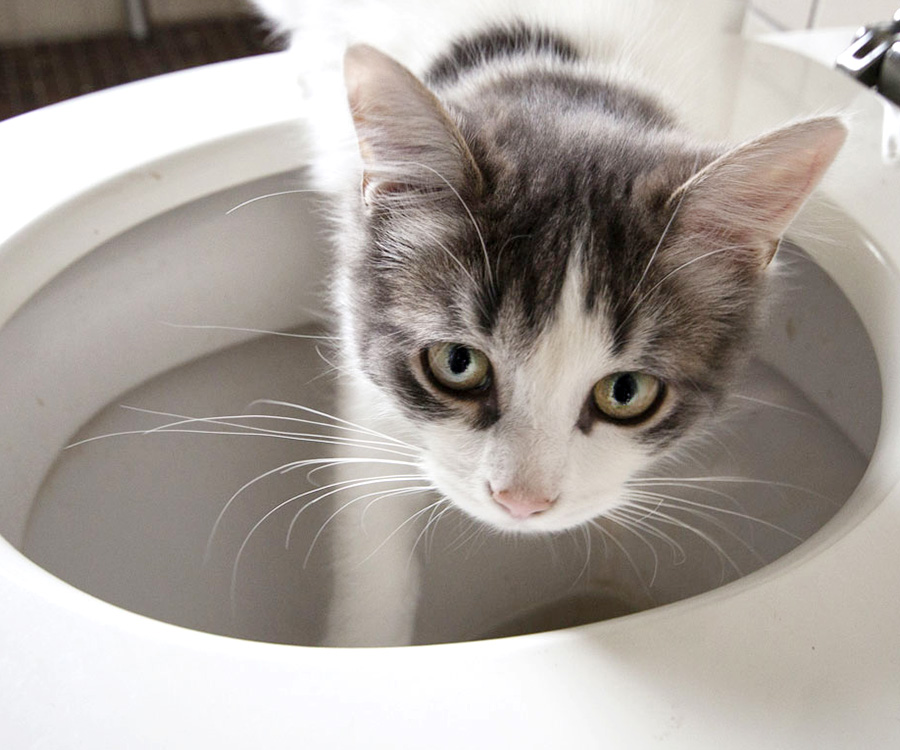Avoid Flush Cat Poop Down Your Toilet - Maintain Your Home's Plumbing Integrity
Avoid Flush Cat Poop Down Your Toilet - Maintain Your Home's Plumbing Integrity
Blog Article
The article following next involving Don’t flush cat feces down the toilet is especially informative. Don't miss it.

Intro
As pet cat proprietors, it's important to be mindful of just how we get rid of our feline buddies' waste. While it might appear practical to flush feline poop down the commode, this technique can have harmful effects for both the environment and human wellness.
Alternatives to Flushing
Luckily, there are safer and a lot more responsible methods to get rid of pet cat poop. Consider the complying with options:
1. Scoop and Dispose in Trash
The most typical technique of taking care of pet cat poop is to scoop it right into a biodegradable bag and throw it in the garbage. Make certain to make use of a specialized litter inside story and throw away the waste without delay.
2. Usage Biodegradable Litter
Go with naturally degradable pet cat clutter made from products such as corn or wheat. These clutters are eco-friendly and can be safely thrown away in the garbage.
3. Bury in the Yard
If you have a lawn, think about burying cat waste in a marked location away from veggie gardens and water resources. Make sure to dig deep enough to stop contamination of groundwater.
4. Install a Pet Waste Disposal System
Buy a pet dog waste disposal system specifically designed for pet cat waste. These systems use enzymes to break down the waste, decreasing smell and environmental influence.
Health Risks
Along with ecological worries, purging pet cat waste can additionally position wellness risks to humans. Pet cat feces might include Toxoplasma gondii, a bloodsucker that can trigger toxoplasmosis-- a possibly severe ailment, particularly for expectant females and individuals with damaged immune systems.
Environmental Impact
Purging cat poop presents harmful microorganisms and bloodsuckers into the water supply, presenting a substantial risk to aquatic environments. These contaminants can adversely affect marine life and compromise water quality.
Final thought
Accountable pet dog possession expands beyond offering food and shelter-- it likewise involves proper waste management. By refraining from flushing cat poop down the commode and going with alternate disposal techniques, we can lessen our ecological impact and shield human health and wellness.
Why Can’t I Flush Cat Poop?
It Spreads a Parasite
Cats are frequently infected with a parasite called toxoplasma gondii. The parasite causes an infection called toxoplasmosis. It is usually harmless to cats. The parasite only uses cat poop as a host for its eggs. Otherwise, the cat’s immune system usually keeps the infection at low enough levels to maintain its own health. But it does not stop the develop of eggs. These eggs are tiny and surprisingly tough. They may survive for a year before they begin to grow. But that’s the problem.
Our wastewater system is not designed to deal with toxoplasmosis eggs. Instead, most eggs will flush from your toilet into sewers and wastewater management plants. After the sewage is treated for many other harmful things in it, it is typically released into local rivers, lakes, or oceans. Here, the toxoplasmosis eggs can find new hosts, including starfish, crabs, otters, and many other wildlife. For many, this is a significant risk to their health. Toxoplasmosis can also end up infecting water sources that are important for agriculture, which means our deer, pigs, and sheep can get infected too.
Is There Risk to Humans?
There can be a risk to human life from flushing cat poop down the toilet. If you do so, the parasites from your cat’s poop can end up in shellfish, game animals, or livestock. If this meat is then served raw or undercooked, the people who eat it can get sick.
In fact, according to the CDC, 40 million people in the United States are infected with toxoplasma gondii. They get it from exposure to infected seafood, or from some kind of cat poop contamination, like drinking from a stream that is contaminated or touching anything that has come into contact with cat poop. That includes just cleaning a cat litter box.
Most people who get infected with these parasites will not develop any symptoms. However, for pregnant women or for those with compromised immune systems, the parasite can cause severe health problems.
How to Handle Cat Poop
The best way to handle cat poop is actually to clean the box more often. The eggs that the parasite sheds will not become active until one to five days after the cat poops. That means that if you clean daily, you’re much less likely to come into direct contact with infectious eggs.
That said, always dispose of cat poop in the garbage and not down the toilet. Wash your hands before and after you clean the litter box, and bring the bag of poop right outside to your garbage bins.
https://trenchlesssolutionsusa.com/why-cant-i-flush-cat-poop/

I recently found that piece on How to Dispose of Cat Poop and Litter Without Plastic Bags when surfing around the internet. Feel free to take a moment to share this content if you liked it. Thank you for your time spent reading it.
Source This Article Report this page